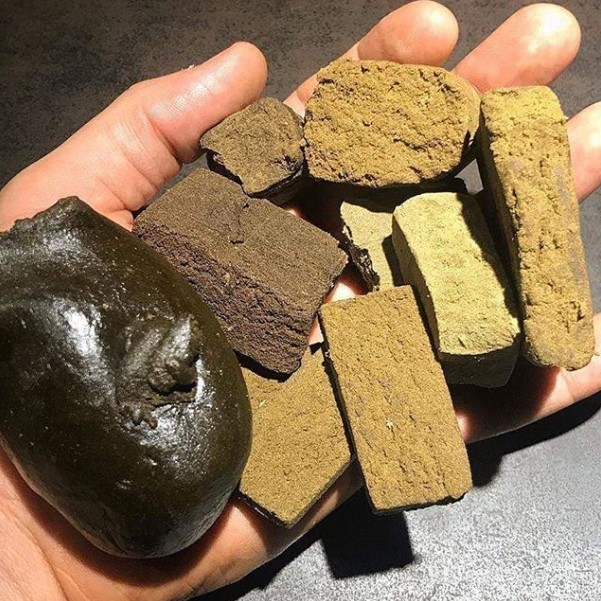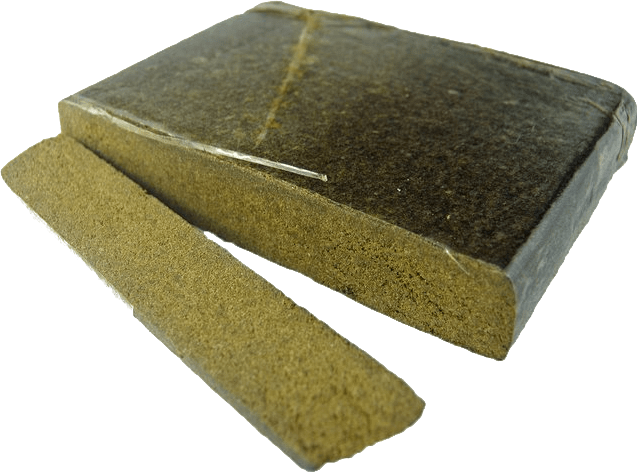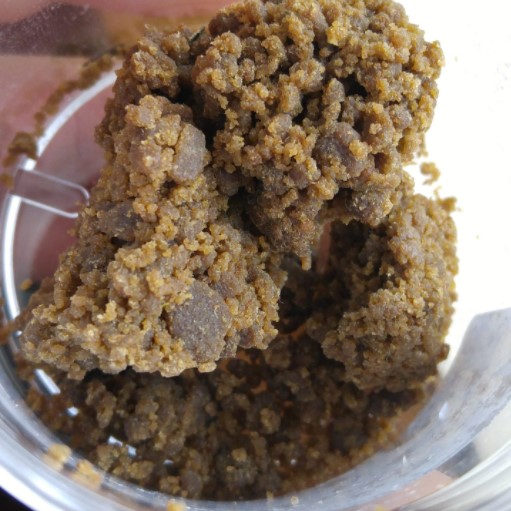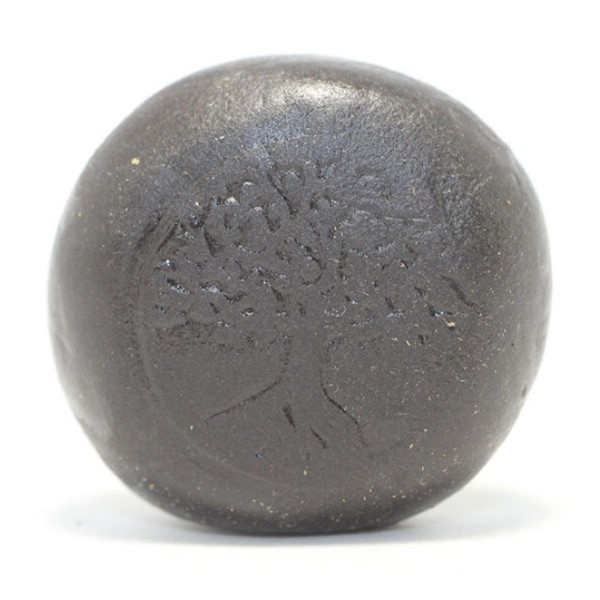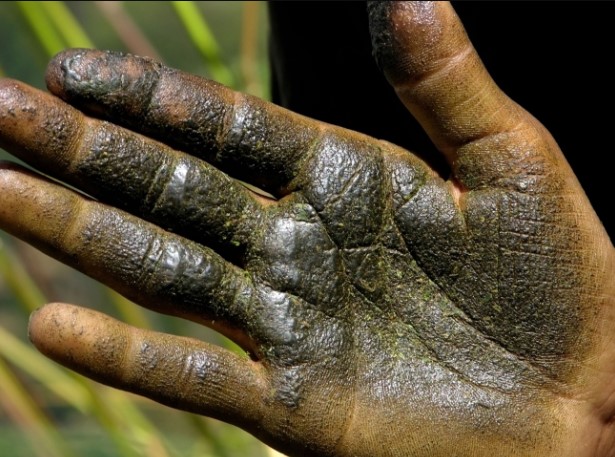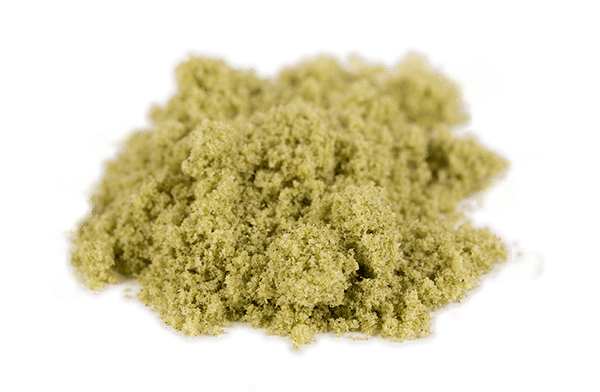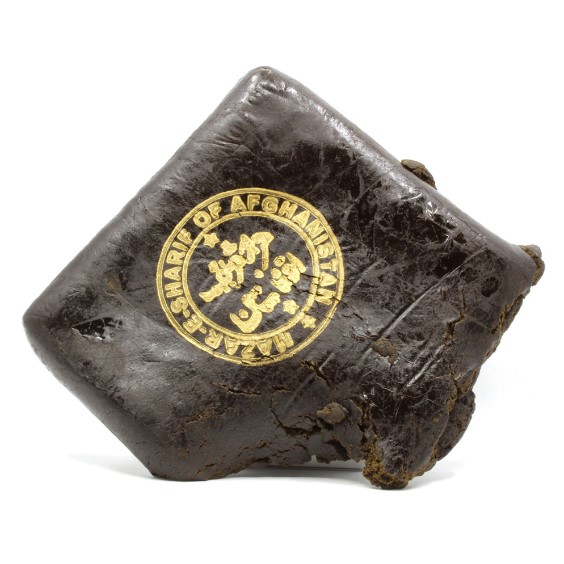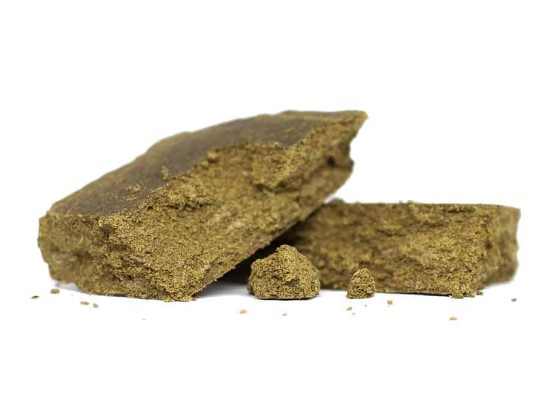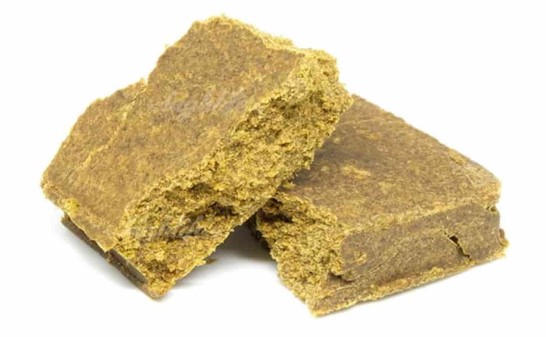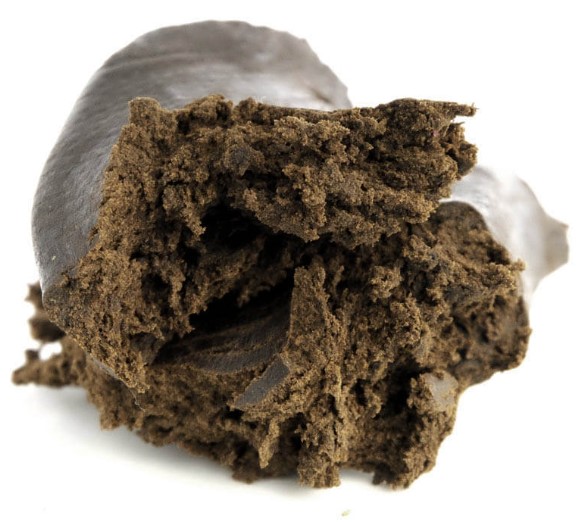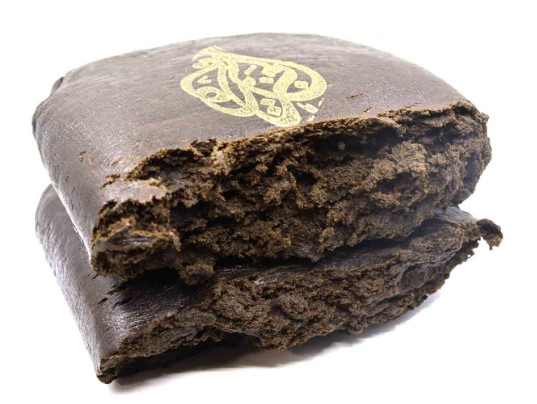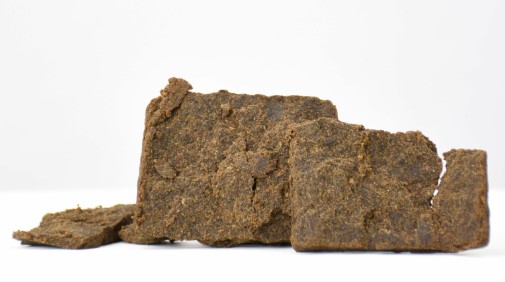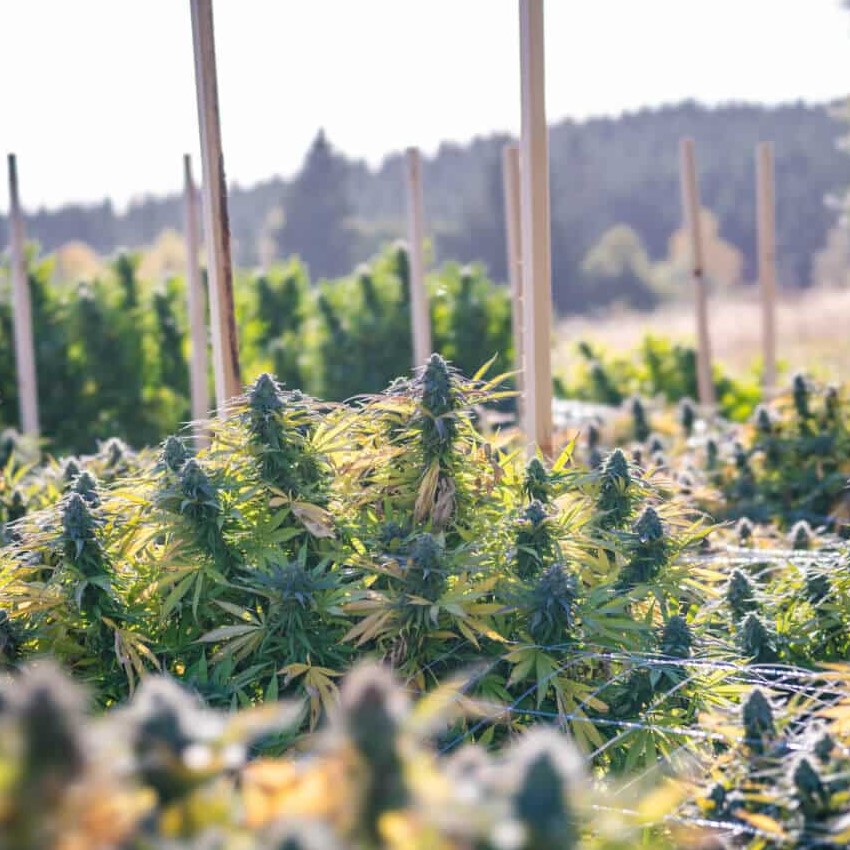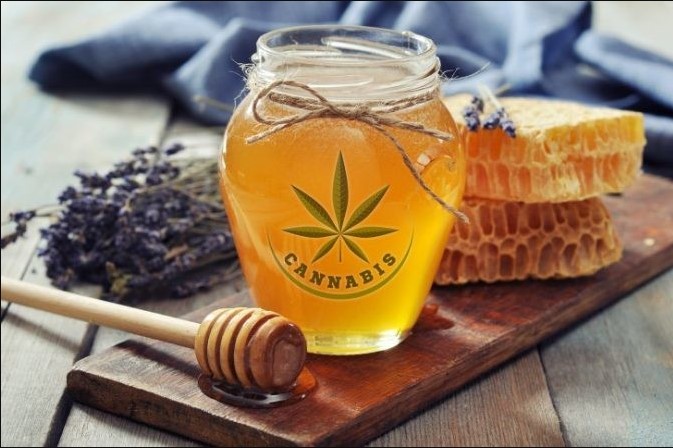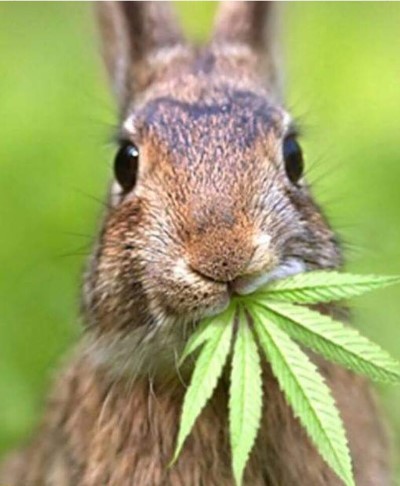Hash, a centuries-old cannabis derivative, has captured the fascination of enthusiasts and connoisseurs alike with its diverse forms, unique flavors, and potent effects. This concentrated resin product, extracted from the cannabis plant’s trichomes, comes in a variety of types, each distinguished by its production method and geographical origin. In this comprehensive exploration, we delve into the captivating world of hashish, unveiling the intricacies of its production techniques, the assortment of types it encompasses, and the geographical regions that contribute to its rich tapestry. Join us on a journey through the aromatic alleys of Afghan hash, the rustic charm of Moroccan varieties, the mystique of Nepalese creations, and the heritage of Indian and Lebanese traditions. From the traditional methods of hand-rubbing to modern sieving and pressing techniques, we uncover the artistry behind hashish production.
Table of Contents:
I. Historical Significance of Hash
II. Types of Hashish
A. Traditional Hash
1. Production Methods
2. Characteristics and Potency
B. Bubble Hash
1. Production Process
2. Purity and Quality
1. Hand-Rolled Elegance
2. Aroma and Texture
1. Simple Extraction Technique
2. Texture and Uses
1. Collection and Uses
2. Enhancement of Cannabis Products
III. Geographical Classification
A. Afghan Hash
1. Traditional Methods
2. Flavor Profile and Effects
1. Sifting Techniques
2. Color and Aroma
1. Hand-Rubbing Craftsmanship
2. Cultural Significance
1. Himalayan Elegance
2. Unique Characteristics
1. Diverse Varieties
2. Regional Influences
1. Production and Appearance
2. Popularity and Traditions
1. Traditional Methods in Turkey
2. Texture and Aroma
IV. Conclusion
1.Evolution and Future of Hashish
2. Legal Status and Cultural Impact
Historical Significance of Hash
Hash, a substance steeped in history and tradition, holds a significant place in the annals of human civilization. Its origins can be traced back thousands of years. Deep into the heart of ancient cultures, it was revered, not just for its recreational and medicinal properties, but also for its spiritual and ritualistic significance.
Ancient Roots:
The use of hashish can be dated back to ancient civilizations such as the Assyrians, Babylonians, and Persians, where it was often employed in religious ceremonies, connecting devotees with the divine. In ancient India, cannabis was mentioned in sacred texts like the Atharva Veda, emphasizing its revered status in religious practices. Hashish found its way into the mystical traditions of Sufism, a mystical Islamic belief system, where it was believed to aid in achieving spiritual enlightenment and communion with the divine.
Medicinal and Recreational Use:
Historically, hashish has been utilized for its medicinal properties across various cultures. In medieval times, Arabic physicians documented its use for pain relief, relaxation, and appetite stimulation. It also gained popularity in the Middle East and North Africa, becoming an integral part of social gatherings and cultural traditions.
Global Spread and Influence:
As trade routes expanded and cultures intermingled, hashish spread across continents, influencing diverse societies. In the 19th and early 20th centuries, hashish became a symbol of counterculture movements, particularly in the Western world, where artists, writers, and intellectuals explored its mind-expanding effects, leading to a surge in popularity during the 1960s and 1970s.
Legal Status and Cultural Impact:
The legal status of hashish has varied throughout history and across different regions. While it has faced prohibition and strict regulations in many countries, its cultural impact has endured. Hashish has inspired art, literature, music, and film, becoming a symbol of rebellion, creativity, and spirituality.
In understanding the historical significance of hash, we gain insight into the evolution of human society, cultural exchange, and the intricate relationship between humans and psychoactive substances. As we delve deeper into the types and production methods of hashish, we continue to unravel the threads that connect us to our ancient past, exploring the diverse tapestry of traditions that have shaped this extraordinary substance.
II. Types of Hashish
A. Traditional Hash
1. Production Methods:
Traditional hashish, often considered the cornerstone of hashish culture, is crafted through meticulous and time-honored methods, passed down through generations. The production of traditional hashish involves a careful process that maximizes the extraction of resin glands from cannabis plants.
Harvesting:
The process begins with the careful selection of high-quality cannabis plants. Cultivators allow the plants to mature fully, ensuring that the resin glands, also known as trichomes, are at their peak potency. These trichomes contain the coveted cannabinoids like THC and CBD.
Hand-Rubbing (Charas):
In regions like India, Nepal, and parts of the Middle East, experienced artisans gently rub the cannabis flowers between their hands, allowing the resin to stick to their palms. Over time, the resin accumulates and forms into a malleable, dark, and sticky substance known as charas. This artisanal method requires skill and patience, resulting in a product highly valued for its purity and potency.
Sieving:
In some traditional hash-producing regions, such as Morocco and Lebanon, the harvested cannabis plants are sifted through fine mesh screens or silk fabrics. This process separates the resin glands from the plant material, resulting in a fine powder known as kief. The kief is then pressed and compacted to form blocks or balls of hashish. The quality of the sieve and the fineness of the mesh significantly influence the texture and potency of hash.
Pressing:
After the resin glands are collected, they are often pressed together using heat and pressure. This pressing helps remove excess moisture and further concentrates the cannabinoids, resulting in dense, solid blocks of traditional hashish. The pressure applied during pressing can vary, leading to different textures, from soft and pliable to hard and brittle.
Aging and Curing:
Traditional hashish is often left to age and cure, allowing flavors and aromas to develop fully. During this process, the hashish may darken in color and harden, enhancing its potency and character. Experienced hashish producers understand the importance of proper aging, which can significantly improve the overall quality of the product.
Traditional hashish, created with patience, expertise, and a deep respect for the plant, exemplifies the artistry and craftsmanship that have been integral to hashish production for centuries. As we explore further into the realm of hashish varieties, the distinctive qualities of traditional hash serve as a testament to the rich heritage of this ancient cannabis extract.
2. Characteristics and Potency:
Traditional hashish, with its rich history and artisanal production methods, possesses distinct characteristics and potent effects that have captivated cannabis enthusiasts for generations.
Color and Texture:
Traditional hashish comes in various colors, ranging from deep brown to almost black, depending on factors such as the source plant, production methods, and aging process. Its texture can vary from soft and pliable to hard and brittle, influenced by the pressing techniques employed during production. The color and texture serve as visual cues, indicating the hashish’s quality and purity.
Aroma and Flavor:
One of the defining features of traditional hashish is its aromatic complexity. Depending on the strain of cannabis used and the region of production, traditional hash can exhibit a wide range of scents, from earthy and woody to spicy and floral. The aroma is often intense and pungent, filling the air with the essence of the cannabis plant. When smoked, traditional hashish releases flavors that mirror its aroma, providing a sensory experience appreciated by connoisseurs.
Potency and Cannabinoid Content:
Traditional hashish is renowned for its high potency, thanks to the concentrated levels of cannabinoids, especially THC (tetrahydrocannabinol) and CBD (cannabidiol). Due to the meticulous extraction methods and the emphasis on collecting resin glands, traditional hashish can have significantly higher cannabinoid content than other cannabis products. This elevated potency results in powerful psychoactive effects, making it a favorite among those seeking intense experiences.
Effects and Consumption:
When consumed, traditional hashish induces a strong and enduring high characterized by relaxation, euphoria, and altered sensory perception. Its effects can vary from sedative and calming to uplifting and creative, depending on the strain and individual tolerance. Traditional hashish is often consumed by smoking in pipes, water pipes (bongs), or rolled into joints or cigarettes. Some enthusiasts prefer to crumble it over a bowl of cannabis flowers for added potency and flavor.
Medical Applications:
Beyond recreational use, traditional hashish has medicinal applications and is used by patients seeking relief from conditions such as chronic pain, insomnia, and anxiety. The concentrated cannabinoids provide effective symptom relief, making it a valuable option for medical cannabis users.
In essence, traditional hashish stands as a testament to the skill and expertise of hashish artisans, preserving the ancient techniques that have shaped this exceptional cannabis extract. Its unique characteristics and potent effects continue to fascinate and inspire cannabis enthusiasts, ensuring its enduring popularity in the ever-evolving landscape of cannabis consumption.
B. Bubble Hash
1. Production Process:
Bubble hash, also known as ice hash or water hash, represents a modern and highly efficient method of extracting resin glands from cannabis plants. This technique utilizes ice-cold water and agitation to separate trichomes from the plant material, resulting in a pure and potent concentrate highly sought after by cannabis connoisseurs.
Harvesting and Freezing:
The process begins with freshly harvested cannabis flowers, which are frozen to preserve their trichomes. Freezing the plant material ensures that the resin glands become brittle and break off easily during the agitation process.
Agitation and Separation:
The frozen cannabis flowers are then mixed vigorously with ice-cold water in a set of specialized mesh bags, often called “bubble bags.” As the mixture is agitated, the cold water causes the trichomes to freeze and become brittle. The agitation breaks the trichomes off the plant material, allowing them to pass through the mesh while leaving behind the plant fibers.
Filtration:
The mixture of water and trichomes is filtered through the series of bubble bags with varying mesh sizes. Each bag collects trichomes of specific sizes, resulting in different grades of bubble hash. The smallest mesh size collects the finest and purest trichomes, while larger mesh sizes capture contaminants and larger plant particles.
Drying and Pressing:
Once the desired trichome grades have been collected, they are carefully removed from the bubble bags and left to dry. The drying process is crucial to remove excess moisture, enhancing the hash’s texture and potency. After drying, the bubble hash can be pressed into blocks or balls using gentle heat and pressure, further concentrating the cannabinoids and terpenes.
Quality Control:
Experienced hash makers pay close attention to the quality of the starting material, the water temperature, and the duration of agitation. These factors significantly impact the final product’s purity, potency, and overall quality. Proper filtration and drying techniques are essential to produce high-grade bubble hash.
Purity and Potency:
Bubble hash is known for its purity, as the extraction method separates the resin glands from contaminants effectively. Due to its high trichome content, bubble hash boasts remarkable potency, with THC levels often exceeding those found in traditional cannabis flowers.
The production process of bubble hash exemplifies the marriage of traditional hashish craftsmanship with modern extraction technology, resulting in a concentrate celebrated for its exceptional purity and potency. Its popularity among cannabis enthusiasts highlights the continuous innovation within the world of hashish production.
2. Purity and Quality:
Bubble hash stands out in the realm of cannabis concentrates due to its remarkable purity and exceptional quality, making it a favorite among cannabis enthusiasts and connoisseurs. Several factors contribute to the purity and quality of bubble hash, distinguishing it as a superior extract within the world of hashish.
Trichome Separation:
The key to bubble hash’s purity lies in its extraction process. By using ice-cold water and agitation, bubble hash makers are able to selectively separate trichomes from the plant material. Trichomes, the resin glands containing cannabinoids and terpenes, are the essence of cannabis potency. Through careful agitation and filtration, bubble hash makers ensure that only these resin-rich trichomes are collected, leaving behind impurities such as plant matter and contaminants.
Multiple Filtration Levels:
Bubble hash production involves the use of multiple mesh bags with different micron sizes. Each bag captures trichomes of specific sizes, allowing hash makers to grade the hash based on purity. The finest and purest trichomes pass through the smallest mesh size, ensuring that the final product is free from unwanted particles. This meticulous filtration process guarantees a clean and pure concentrate.
Absence of Solvents:
Unlike some other cannabis concentrates that require the use of solvents for extraction, bubble hash is solventless. It relies solely on the mechanical separation of trichomes using water and ice. The absence of solvents ensures that no residual chemicals are present in the final product, maintaining its natural purity and enhancing the overall experience for consumers.
Aroma and Flavor Preservation:
Bubble hash’s production method preserves the delicate terpenes, the compounds responsible for cannabis’ aroma and flavor. The cold water extraction process is gentle on the terpenes, ensuring that the hash retains the distinct flavors and aromas of the original cannabis strain. This preservation of terpenes enhances the hash’s overall quality, providing consumers with a flavorful and aromatic experience.
Versatility and Consumption Methods:
Bubble hash’s purity and quality make it highly versatile. It can be consumed in various ways, including sprinkled on top of cannabis flowers, vaporized, or dabbed. Its versatility allows consumers to enjoy the concentrate in a manner that suits their preferences, enhancing the overall user experience.
The exceptional purity and quality of bubble hash make it a standout choice for cannabis enthusiasts who appreciate the full spectrum of cannabinoids, terpenes, and a clean, potent experience. Its popularity continues to grow, driven by the demand for high-quality, natural cannabis concentrates that provide an authentic and flavorful representation of the cannabis plant.
C. Charas
1. Hand-Rolled Elegance:
Charas, often referred to as the “cream of the cannabis crop,” embodies the epitome of artisanal hashish production. This ancient and revered form of hashish, originating from regions like India, Nepal, and parts of the Middle East, is meticulously crafted through a labor-intensive process that highlights the skill and expertise of the hashish artisans.
Hand-Harvesting:
Charas production begins with the careful selection of high-quality cannabis plants. Skilled harvesters, often called “charas wallahs,” meticulously collect the resin-rich trichomes directly from the flowering tops of female cannabis plants. Using their hands and a gentle rolling motion, they harvest the sticky resin, taking care not to damage the delicate flowers.
Rolling Technique:
The harvested resin is rolled and pressed between the palms of the charas wallahs to form small, dark balls or sticks. This hand-rolling technique is an art that has been passed down through generations, requiring precision, patience, and a deep understanding of the plant. The rolling motion warms the resin, making it pliable and allowing it to bind together, resulting in the characteristic charas sticks or balls.
Aroma and Texture:
Charas is renowned for its distinct aroma and texture. Its scent varies from floral and spicy to earthy and woody, depending on the strain of cannabis used and the region of production. The texture is soft, sticky, and pliable, making it easy to handle and shape into the desired forms. Charas has a unique velvety texture that sets it apart from other types of hashish.
Cultural Significance:
Beyond its physical qualities, charas holds significant cultural and religious importance in regions where it is produced. In places like India and Nepal, charas has been used for centuries in spiritual and religious ceremonies. Sadhus, holy men and ascetics, traditionally use charas to aid in meditation and connect with the divine, considering it a sacred and spiritual substance.
Limited Production and Rarity:
Charas production is labor-intensive and time-consuming, limiting its availability in the market. The scarcity of charas adds to its allure, making it a prized possession among cannabis enthusiasts and collectors. Its rarity and cultural significance contribute to its elevated status in the world of hashish.
Charas, with its hand-rolled elegance and deep-rooted cultural significance, represents the soul of traditional hashish craftsmanship. Each charas ball or stick is a testament to the expertise of the artisans who delicately harvest and shape it, preserving ancient traditions and captivating cannabis enthusiasts with its unique qualities and rich heritage.
2. Aroma and Texture:
Aroma:
Charas, often regarded as the “fingerprint of the gods,” boasts an aroma that is nothing short of captivating. The scent of charas is a sensory masterpiece, ranging from sweet and floral notes to earthy and spicy undertones. This intricate bouquet is a result of the unique combination of cannabis strain genetics, the specific terpenes present, and the environment in which the plants are cultivated. When charas is gently warmed or rubbed between the fingers, its aroma intensifies, releasing a symphony of fragrances that envelop the senses. The scent of charas is deeply aromatic, evoking a connection to nature and the plant itself. Each whiff is a journey through the cannabis plant’s diverse terpene profile, offering enthusiasts a delightful olfactory experience.
Texture:
The texture of charas is a testament to the skill and expertise of the artisans who craft it. Characterized by its soft and pliable consistency, charas exhibits a texture reminiscent of clay or putty. This malleable nature allows it to be shaped effortlessly into small balls or sticks, a process that requires meticulous hand-rolling techniques. When handled, charas possesses a delightful stickiness, adhering to the skin and providing a tactile experience unlike any other. Its velvety smoothness further enhances the overall sensory encounter, inviting enthusiasts to explore its texture through touch. Charas is not just a substance to be consumed but a tactile masterpiece, inviting individuals to engage with it physically and experience its luxurious, velvety texture firsthand.
The aroma and texture of charas combine to create a multisensory adventure, inviting enthusiasts to indulge in the rich olfactory and tactile nuances of this ancient and revered hashish variety. With its enchanting scent and luxurious texture, charas offers a sensory journey that transcends the ordinary, captivating the senses and enriching the overall hashish experience for those fortunate enough to encounter it.
D. Finger Hash
1. Simple Extraction Technique:
Finger hash, a rustic and straightforward form of hashish, is crafted using a simple extraction technique that requires minimal equipment and expertise. This traditional method allows enthusiasts to produce hashish using their own hands, making it one of the most accessible and basic forms of hashish extraction.
Harvesting:
The process begins with the harvesting of cannabis flowers, typically done by gently rubbing the mature, resin-coated buds with the fingers. During this process, the resin glands, or trichomes, stick to the skin due to their sticky and resinous nature. Cultivators select resin-rich strains to maximize the yield of finger hash.
Rolling and Rubbing:
Once the resin glands adhere to the fingers, the cultivator continues to roll and rub the fingers together, collecting the resin and shaping it into small balls or sticks. The heat generated by the friction of the rubbing motion warms the resin, making it pliable and allowing it to amalgamate into cohesive pieces.
Gentle Extraction:
The extraction method is gentle, relying on the natural warmth and pressure of the fingers to collect the resin. The process is repeated until a sufficient amount of finger hash is obtained. While simple, this method requires patience, as the yield depends on the resin content of the cannabis strain and the time dedicated to the rubbing process.
Texture and Appearance:
Finger hash typically has a dark color, ranging from brown to almost black, due to the concentration of trichomes. Its texture is soft, sticky, and pliable, making it easy to handle and shape. The individual pieces of finger hash retain the imprint of the fingers, showcasing the artisanal nature of the extraction process.
Informal and Traditional:
Finger hash is often produced informally, without the need for specialized equipment or complex techniques. It is a traditional method of hashish extraction that has been practiced for centuries, reflecting the simplicity and authenticity of the process. Despite its basic nature, finger hash holds a certain charm, appealing to enthusiasts who appreciate the hands-on approach and the connection it fosters between the cultivator and the cannabis plant.
Finger hash, with its uncomplicated extraction technique, serves as a reminder of the humble origins of hashish production. Its simplicity highlights the raw essence of the cannabis plant, allowing individuals to engage directly with nature and craft their own hashish using minimal resources and a touch of craftsmanship.
2. Texture and Uses:
Texture:
Finger hash is renowned for its unique texture, characterized by a soft, sticky, and pliable consistency. Its malleability allows it to be easily shaped into small balls, sticks, or flattened pieces. The texture is a direct result of the extraction process, which involves the natural warmth and pressure of the fingers. Due to its softness, finger hash is delicate and can be easily manipulated by hand. When touched, it adheres to the skin, leaving a sticky residue that showcases its resinous nature. The individual pieces of finger hash are often small and irregular, each bearing the imprint of the fingers that crafted them. This distinctive texture enhances the tactile experience, inviting enthusiasts to explore its softness and stickiness, creating a direct connection between the hashish and the senses.
Uses:
Finger hash, although basic in its extraction method, offers a range of uses appreciated by cannabis enthusiasts and connoisseurs:
Smoking:
Finger hash can be smoked on its own or mixed with cannabis flowers in a joint or pipe. Its high resin content ensures a potent and flavorful smoking experience. When smoked, finger hash provides a smooth and rich inhale, delivering the concentrated cannabinoids and terpenes directly to the consumer.
Topping or Coating:
Enthusiasts often use finger hash to enhance the potency and flavor of cannabis buds. It can be crumbled and sprinkled over a bowl of cannabis flowers, creating a potent layer that intensifies the effects and elevates the aroma and taste of the smoking experience. This method, known as “twaxing,” allows enthusiasts to customize their cannabis consumption according to their desired potency.
Edibles:
Finger hash can also be used in the preparation of cannabis-infused edibles. When decarboxylated and incorporated into recipes, it adds a concentrated dose of cannabinoids to baked goods, tinctures, or oils. Its resinous nature makes it an efficient choice for infusing edibles, ensuring a strong and consistent potency in the final product.
Vaporization:
Finger hash can be vaporized using specialized vaporizers designed for concentrates. Vaporization allows enthusiasts to experience the full spectrum of cannabinoids and terpenes without the combustion process, resulting in a cleaner and more flavorful vapor. Finger hash’s soft texture makes it easy to load into vaporizer pens or dab rigs, providing a convenient and efficient method of consumption.
While finger hash may be simple in its extraction, its versatile uses and unique texture make it a valuable and cherished form of hashish. Whether enjoyed on its own, mixed with cannabis flowers, or infused into edibles, finger hash offers a genuine and authentic cannabis experience, celebrated for its natural simplicity and direct connection to the plant.
E. Kief
1. Collection and Uses:
Kief, often referred to as the “gold dust” of the cannabis plant, is a powdery substance composed of the resin glands (trichomes) that contain cannabinoids and terpenes. It is collected from cannabis flowers and is renowned for its potency and versatility.
- Collection: Kief is collected by using a grinder equipped with a screen or a specialized dry sift box. When cannabis flowers are ground, the trichomes are separated from the plant material and sift through the screen. The collected kief accumulates in the bottom compartment of the grinder or the tray of the sift box. Cannabis enthusiasts often collect kief over time and store it for later use, appreciating its potency and concentrated effects.
- Uses:
- Sprinkling: One of the most common uses of kief is sprinkling it on top of cannabis bowls or joints. By adding a layer of kief, users can significantly enhance the potency of their smoking experience, resulting in a more potent and flavorful high.
- Pressing: Kief can be pressed into hashish-like blocks or cakes using heat and pressure. The pressing process compacts the kief, creating a solid, resinous product that can be broken apart and smoked or vaporized.
- Edibles: Kief can be decarboxylated (heated to activate cannabinoids) and infused into various edible recipes, such as brownies, cookies, or tinctures. Its potency makes it an excellent choice for infusing edibles, providing a strong and consistent dose of cannabinoids.
- Vaporization: Kief can be vaporized using specialized vaporizer pens or desktop vaporizers. Vaporization allows for a cleaner inhalation experience, as the cannabinoids are activated without the need for combustion, resulting in a smooth and flavorful vapor.
2. Enhancement of Cannabis Products:
Kief serves as a valuable ingredient in enhancing various cannabis products, elevating both their potency and user experience.
- Joint Rolling: Cannabis enthusiasts often roll joints that are coated in a layer of kief. This process, commonly known as “twaxing,” involves spreading a thin layer of kief on a rolling paper before adding ground cannabis. When the joint is smoked, the kief intensifies the effects and adds a unique flavor profile, enhancing the overall smoking experience.
- Cannabis Concentrates: Kief is a precursor to many cannabis concentrates, including hashish and oils. By further processing and refining kief, manufacturers can create potent concentrates that are highly valued in the cannabis market. These concentrates are consumed through methods such as dabbing, providing an intense and immediate high.
- Topical Products: Some cannabis-infused topical products, such as lotions and balms, incorporate kief for its cannabinoid content. When applied to the skin, these products provide localized relief from pain, inflammation, and soreness.
Kief’s versatility and potency make it a sought-after cannabis product, allowing enthusiasts to enhance their smoking experience, create potent edibles, and explore a variety of consumption methods. Its collection and uses exemplify the creativity and ingenuity of cannabis enthusiasts and industry professionals alike, showcasing the diverse applications of this valuable cannabis component.
III. Geographical Classification
A. Afghan Hash
1. Traditional Methods:
Afghan hash holds a legendary status in the world of hashish, renowned for its potency, flavor, and the traditional methods used in its production. The hashish-making traditions in Afghanistan are deeply rooted in the country’s history and culture, making Afghan hash a celebrated and cherished product among cannabis enthusiasts worldwide.
Cultivation of Cannabis:
Afghan hash is primarily crafted from cannabis strains indigenous to Afghanistan’s diverse regions. These strains, cultivated for generations, are well-adapted to the country’s climate and terrain. The cannabis plants are cultivated in traditional outdoor fields, benefitting from the abundant sunlight and natural elements, which contribute to the unique characteristics of Afghan hash.
Hand-Rubbing Technique:
One of the traditional methods of producing Afghan hash involves hand-rubbing the mature cannabis plants. Skilled farmers, often with years of experience, gently rub the flowering tops of the cannabis plants between their hands. The resin glands, containing the valuable cannabinoids and terpenes, stick to their palms during this process. Over time, the collected resin forms into a sticky, dark substance known as charas or finger hash.
Sifting and Pressing:
In addition to hand-rubbing, some Afghan hash producers employ sifting techniques. Dried cannabis plants are sieved through fine mesh screens, separating the resin glands from the plant material. The collected kief is then pressed and compacted into blocks or balls of hashish. Traditional presses, often made of wood or metal, are used to apply pressure, shaping the hashish into the desired forms.
Aging and Curing:
Afghan hash, like many traditional varieties, benefits from the aging and curing process. Once pressed, the hashish blocks are left to age and cure, allowing the flavors and aromas to develop fully. This period of rest results in a smoother smoke and a more nuanced flavor profile, enhancing the overall quality of the hashish.
Regional Variations:
Afghanistan’s diverse geography, with regions ranging from high-altitude mountains to fertile valleys, gives rise to a variety of Afghan hash types. Each region imparts its unique characteristics to the hashish, influenced by factors such as soil composition, climate, and cultivation techniques. Some regions are known for producing exceptionally potent hashish, celebrated for their strong effects and distinct flavors.
The traditional methods employed in Afghan hash production highlight the craftsmanship and expertise of Afghan farmers, who have honed their skills over centuries. These methods, deeply intertwined with the country’s cultural heritage, result in a hashish variety that is not only potent and flavorful but also emblematic of Afghanistan’s rich cannabis traditions. Afghan hash continues to captivate enthusiasts with its authenticity and time-honored production techniques, making it a cornerstone in the world of hashish appreciation.
2. Flavor Profile and Effects:
Afghan hash, crafted through time-honored methods and steeped in the rich heritage of Afghanistan’s cannabis culture, offers a distinctive flavor profile and a potent array of effects that have captivated cannabis enthusiasts for generations.
Flavor Profile:
The flavor profile of Afghan hash is characterized by its robust and earthy notes, reminiscent of the rugged landscapes from which it originates. Its taste is often described as woody, with hints of pine, spice, and subtle floral undertones. This complex combination of flavors results from the unique terpene profile of the indigenous Afghan cannabis strains. The resinous glands, carefully extracted and expertly processed, preserve these natural terpenes, creating a hashish variety with a deep, aromatic complexity. When smoked, Afghan hash releases a dense and pungent smoke, filling the air with its distinctive aroma and enveloping the senses in an authentic cannabis experience.
Effects:
Afghan hash is revered for its potent effects, offering a deeply relaxing and sedative experience. The high THC content, coupled with other cannabinoids and terpenes, delivers a powerful body stone and a soothing cerebral euphoria. Users often report a sense of calm and tranquility washing over them, accompanied by a gentle upliftment of mood and an overall sense of well-being. The effects of Afghan hash are ideal for evening or nighttime use, making it a popular choice among those seeking relaxation, stress relief, and relief from insomnia. Its sedative properties are valued for their ability to alleviate pain and promote restful sleep, providing a natural remedy for various ailments.
Medicinal Applications:
Afghan hash has been utilized for its medicinal properties for centuries. Its potent analgesic and anti-inflammatory effects make it valuable in managing chronic pain conditions such as arthritis and fibromyalgia. Additionally, its relaxing properties are beneficial for individuals dealing with anxiety, depression, and stress-related disorders. Afghan hash’s ability to induce deep relaxation and sedation makes it an effective remedy for insomnia and sleep disorders, providing patients with a natural and holistic solution for improving sleep quality.
In summary, Afghan hash’s robust flavor profile and potent effects are a testament to the rich cannabis heritage of Afghanistan. Its earthy and woody notes, combined with its relaxing and sedative properties, create a unique sensory experience that resonates with cannabis enthusiasts seeking an authentic and profound encounter with the plant. Whether appreciated for its traditional craftsmanship, therapeutic benefits, or recreational enjoyment, Afghan hash continues to hold a special place in the hearts of cannabis connoisseurs, embodying the essence of Afghan cannabis traditions and the legacy of centuries-old hashish culture.
B. Moroccan Hash
1. Sifting Techniques:
Moroccan hash, renowned for its quality and consistency, is meticulously crafted using traditional sifting techniques that have been perfected over centuries. These methods involve separating the resin glands (trichomes) from the cannabis plant material, resulting in a hashish variety prized for its potency and purity. Moroccan hash production relies on the expertise of skilled artisans and the country’s favorable climate, making it one of the most revered hashish varieties in the world.
Dry Sifting:
One of the primary techniques used in Moroccan hash production is dry sifting. This method involves gently rubbing dried cannabis flowers and leaves over fine mesh screens. The resin glands, being finer than the plant material, pass through the screens and collect as kief or pollen below. Skilled workers employ hand-held sieves or mechanized screens to sift the cannabis material systematically. The collected kief is then further processed and pressed into blocks or molded into various shapes, preserving the trichomes’ integrity and potency.
Traditional Hand-Pressing:
Once the kief is collected, it is meticulously pressed by hand to form cohesive blocks of hashish. Experienced hashish makers apply gentle pressure and precise techniques to shape the hashish, ensuring it retains its resinous qualities and potency. Traditional hand-pressing methods result in hashish blocks that are dense, solid, and rich in cannabinoids and terpenes.
Multiple Sieving Passes:
Moroccan hash makers often use multiple screens with varying mesh sizes during the sifting process. By employing different screens, they can collect trichomes of specific sizes, allowing for the production of different grades of hashish. The finest and purest trichomes pass through the smallest screens, creating high-quality hashish, while larger screens capture larger particles and contaminants. This meticulous sieving process ensures that only the finest resin glands are used in the final product.
Temperature and Humidity Control:
Moroccan hash production is highly influenced by the country’s climate, characterized by hot days and cool nights. The artisans carefully consider temperature and humidity levels during the sifting process. Dry and low-humidity conditions are essential to prevent the kief from clumping together, ensuring a finer and more manageable end product. The ambient climate plays a crucial role in preserving the hashish’s texture and overall quality.
Skill and Expertise:
The art of Moroccan hash production requires exceptional skill and expertise. Experienced artisans possess an in-depth understanding of cannabis strains, resin gland development, and sifting techniques. Their knowledge allows them to select the best plant material, employ precise sifting methods, and master the art of hand-pressing, resulting in hashish of unparalleled quality.
Moroccan hash’s sifting techniques showcase the dedication and craftsmanship of the artisans involved, emphasizing the importance of tradition and expertise in producing this esteemed hashish variety. The careful selection of cannabis plants, coupled with meticulous sifting and pressing methods, contributes to the unique character and high potency of Moroccan hash, making it a favorite among hashish enthusiasts worldwide.
2. Color and Aroma:
Moroccan hash, celebrated for its exceptional quality and craftsmanship, exhibits distinct characteristics in terms of color and aroma, setting it apart as a highly prized variety in the world of hashish.
Color:
Moroccan hash comes in a range of colors, each indicating different processing methods and cannabinoid concentrations. The color spectrum can vary from light golden to reddish-brown, dark brown, or even black. Lighter-colored Moroccan hash is often associated with fresh and young resin glands, while darker varieties are the result of aging and oxidation, which can deepen the color over time. The color of Moroccan hash is a testament to its quality, with lighter shades often denoting a higher purity and a more delicate flavor profile. The appearance of Moroccan hash is characterized by its smooth and well-pressed texture, reflecting the careful attention to detail during the production process.
Aroma:
The aroma of Moroccan hash is complex and alluring, offering a sensory experience that delights the senses. It typically carries a sweet and spicy fragrance, reminiscent of the Moroccan landscapes where the cannabis plants are cultivated. The aroma may also feature subtle notes of earthiness, pine, and floral undertones, reflecting the terpene profile of the indigenous cannabis strains. When Moroccan hash is gently warmed or crumbled, its aroma intensifies, releasing a rich bouquet that fills the air with its enchanting scent. The aromatic qualities of Moroccan hash contribute to its appeal, inviting enthusiasts to savor the intricacies of its fragrance before indulging in its potent effects.
The diverse colors and captivating aroma of Moroccan hash are a testament to the expertise of the artisans who meticulously craft it. Whether enjoyed for its visual appeal, aromatic richness, or potent effects, Moroccan hash continues to be cherished by hashish enthusiasts worldwide, embodying the essence of Moroccan cannabis culture and the artistry of traditional hashish production.
C. Lebanese Hash
1. Hand-Rubbing Craftsmanship:
Lebanese hash holds a revered status in the hashish world, celebrated for its unique production method known as hand-rubbing craftsmanship. This traditional technique, passed down through generations, involves a meticulous and labor-intensive process that highlights the artistry and expertise of Lebanese hash makers.
- Selective Harvesting: Lebanese hash is crafted from specific cannabis strains cultivated in the fertile regions of Lebanon. Skilled farmers carefully select mature cannabis plants with resin-rich flowers. These plants are grown organically, benefitting from Lebanon’s optimal climate and soil conditions, which contribute to the hash’s distinctive characteristics.
- Hand-Rubbing Technique: The key to Lebanese hash production lies in the hand-rubbing technique. Experienced hash makers, often referred to as “hashishins,” delicately rub the flowering tops of cannabis plants between their hands. The resin glands, containing cannabinoids and terpenes, adhere to their palms, creating a sticky and resinous substance known as charas. This laborious process demands patience, precision, and a deep understanding of the cannabis plant. The hashishins’ expertise ensures that only the finest resin glands are collected, resulting in a high-quality and potent product.
- Rolling and Pressing: Once the charas is collected, it is carefully rolled and pressed by hand into small, dark balls or sticks. The rolling and pressing techniques are essential for shaping the hashish and enhancing its texture. The hashishins apply just the right amount of pressure to create compact and cohesive pieces, preserving the resin glands’ integrity. The resulting hashish exhibits a velvety texture and a rich, aromatic profile, indicative of its hand-crafted origins.
2. Cultural Significance:
Lebanese hash holds profound cultural significance in Lebanon and the broader Middle East region. Its production is deeply rooted in the country’s history, dating back centuries. Lebanese hashish has traditionally been associated with spiritual and religious practices, with Sufi mystics and other spiritual seekers using it to enhance meditation and contemplation. The cultural significance of Lebanese hash extends beyond its psychoactive properties; it symbolizes a connection to the land, the heritage of the people, and the ancient traditions that have shaped Lebanese society.
- Social Bonding and Hospitality: In Lebanese culture, sharing hashish with friends and guests is a gesture of hospitality and social bonding. The act of enjoying hashish together fosters camaraderie and promotes a sense of community. It is often shared during gatherings, celebrations, and communal events, creating a relaxed and convivial atmosphere.
- Traditional Medicine: Lebanese hashish has been used in traditional medicine for centuries. It is believed to have various therapeutic properties, including pain relief, relaxation, and stress reduction. Some individuals turn to Lebanese hashish as a natural remedy for ailments and as a means of enhancing overall well-being.
- Preservation of Heritage: The production and appreciation of Lebanese hash are regarded as cultural treasures, preserving the country’s agricultural heritage and craftsmanship. The knowledge and techniques passed down through generations of hashishins are considered invaluable, safeguarding Lebanon’s hashish tradition for future generations.
Lebanese hash, with its hand-rubbing craftsmanship and deep cultural significance, embodies the essence of Lebanese heritage and craftsmanship. It continues to be cherished by enthusiasts and connoisseurs for its unique qualities, serving as a testament to the enduring traditions and cultural pride of the Lebanese people.
D. Nepalese Hash
1. Himalayan Elegance:
Nepalese hash, often referred to as “Temple Ball” or “Charas,” embodies the essence of Himalayan elegance, representing a refined and artisanal approach to hashish production. Cultivated in the high-altitude regions of Nepal, amidst the majestic peaks of the Himalayas, Nepalese hash is crafted with meticulous care and expertise, capturing the spirit of the mountainous terrain from which it originates.
- High-Altitude Cultivation: Nepalese hash is cultivated in the remote mountain regions of Nepal, where the air is thin, and the climate is harsh. The cannabis plants, grown at high altitudes, endure challenging weather conditions, resulting in robust and resilient strains. The unique combination of altitude, soil composition, and climate contributes to the hashish’s exceptional quality, infusing it with the essence of the Himalayan terroir.
- Hand-Rubbing Tradition: Similar to other revered hashish varieties, Nepalese hash is crafted through the traditional hand-rubbing technique. Skilled cultivators, often local farmers with generations of expertise, delicately rub the resin-rich trichomes of cannabis plants between their hands. This labor-intensive process, performed with precision and care, yields a sticky and resinous substance known as charas. The hand-rubbing tradition is an art form passed down through Nepalese generations, symbolizing the connection between the people and the land.
- Purity and Authenticity: Nepalese hash is celebrated for its purity and authenticity. The hand-rubbing method ensures that only the finest resin glands are collected, free from contaminants and impurities. The hashish is often rolled into small balls or sticks, showcasing the artisans’ craftsmanship. Its purity, combined with the natural environment in which it is produced, results in a hashish variety that is highly regarded for its potency and unadulterated essence.
2. Unique Characteristics:
Nepalese hash possesses a set of unique characteristics that distinguish it as a highly sought-after and distinctive variety within the world of hashish.
- Aroma and Flavor: Nepalese hash is characterized by its enchanting aroma, featuring floral, earthy, and spicy notes. The aroma is reminiscent of the Himalayan flora, evoking the scents of wildflowers and herbs that thrive in the mountainous landscapes. When smoked, Nepalese hash releases a smooth and flavorful smoke, delighting the senses with its intricate bouquet and nuanced taste profile.
- Potency and Effects: Nepalese hash is renowned for its potency, often boasting high levels of THC and other cannabinoids. Its effects are deeply relaxing, offering a tranquil and euphoric experience that resonates with the serene ambiance of the Himalayas. Users often report a sense of calm, introspection, and heightened sensory perception, making it a favorite choice for meditation and contemplation.
- Limited Availability and Rarity: Due to its remote cultivation locations and the labor-intensive production process, Nepalese hash is relatively rare and limited in availability. Its scarcity adds to its allure, making it a prized possession among hashish connoisseurs and collectors. Enthusiasts value Nepalese hash for its exclusivity and the exceptional experience it offers.
Nepalese hash, with its Himalayan elegance and unique characteristics, represents the pinnacle of traditional hashish craftsmanship. It encapsulates the natural beauty of the Nepalese mountains, the expertise of local artisans, and the profound effects that have made it a treasured variety among cannabis enthusiasts. The legacy of Nepalese hash endures as a testament to the artistry and cultural heritage of the people who cultivate it, capturing the essence of the Himalayan mystique in every resinous ball and stick.
E. Indian Hash
1. Diverse Varieties:
Indian hash, renowned for its diversity and cultural significance, encompasses a wide range of varieties, each with its unique characteristics and production methods. The subcontinent’s rich cannabis heritage has given rise to an array of hashish types, reflecting the country’s diverse geography, climate, and cultural traditions.
Malana Cream:
Malana Cream is one of the most famous and coveted varieties of Indian hash. Originating from the village of Malana in the Himachal Pradesh region, this hashish is celebrated for its exceptional potency and resin content. It is meticulously crafted using hand-rubbing techniques, resulting in a sticky and aromatic resin that is shaped into dark brown or black balls. Malana Cream is cherished by hashish enthusiasts for its intense effects and complex flavor profile, often featuring notes of pine, earth, and spices.
Manali Charas:
Hailing from the Manali region in Himachal Pradesh, Manali Charas is another prized variety of Indian hash. It is characterized by its soft texture and earthy aroma, with resin glands that are carefully hand-collected and rolled into small, pliable sticks or balls. Manali Charas is renowned for its balanced effects, offering a relaxing body high and a gentle cerebral euphoria. Its smooth smoke and pleasant flavor make it a favorite among connoisseurs.
Parvati Valley Charas:
Parvati Valley, nestled in the state of Himachal Pradesh, is renowned for its high-quality charas production. The hashish from this region is known for its potency and purity, often boasting a rich golden-brown color and a distinct aroma of ripe fruits and spices. Parvati Valley Charas is crafted using traditional hand-rubbing techniques, capturing the essence of the region’s cannabis plants and the expertise of local artisans.
Kashmiri Charas:
Kashmir, with its unique climate and fertile soil, produces a variety of charas that is highly regarded for its quality. Kashmiri Charas is typically dark and sticky, with a strong earthy aroma and a taste that hints at the region’s terroir. The hashish from Kashmir is often associated with potent sedative effects, making it popular among users seeking relaxation and stress relief.
2. Regional Influences:
Indian hash exhibits a diverse range of regional influences, each contributing to the unique characteristics of the respective varieties.
- Geography and Climate: The diverse geography of India. From the Himalayan mountain ranges to the coastal regions, plays a significant role in hashish production. The altitude, soil composition, and climate of each region influence the cannabis strains’ growth and resin production. Varieties like Malana Cream benefit from the high-altitude conditions, resulting in dense and potent resin glands.
- Cultural Traditions: Hashish production in India is deeply intertwined with cultural traditions and rituals. Different regions have their unique methods of cultivation and extraction, passed down through generations. These traditions, often kept within specific communities, contribute to the diversity of Indian hashish varieties. The knowledge and techniques are guarded and refined, ensuring the preservation of authentic production methods.
- Local Expertise: Skilled artisans and cultivators in various regions of India possess a profound understanding of the cannabis plant and its resin-producing capabilities. Their expertise in selecting the right strains, timing the harvest, and employing specialized extraction techniques shape the characteristics of the hashish produced in their respective areas. Local expertise is a driving force behind the regional distinctions observed in Indian hashish varieties.
Indian hash, with its diverse varieties and regional influences, stands as a testament to the country’s rich cannabis heritage. Each variety tells a story of the land it comes from, the people who cultivate it, and the traditions that have been cherished for centuries. From the majestic mountains of Himachal Pradesh to the serene valleys of Kashmir, Indian hashish embodies the spirit of a nation deeply rooted in cannabis culture and craftsmanship.
F. Pakistani Hash
1. Production and Appearance:
Pakistani hash, often referred to as “Pakistani Black” or “Pakistani Gold,” is esteemed for its distinctive production methods and appearance. Crafted in the mountainous regions of Pakistan, this hashish variety is renowned for its potency and rich, aromatic qualities.
- Traditional Production: Pakistani hash is traditionally produced using age-old techniques that emphasize the natural resin extraction process. Cannabis plants, cultivated in the mountainous terrain, are carefully harvested at the peak of resin production. Skilled artisans employ hand-rubbing methods to collect the resin glands, ensuring a gentle and meticulous extraction process. The collected resin is then pressed and molded into dark brown or black blocks or balls, showcasing the artisanal craftsmanship and expertise of Pakistani hash makers.
- Texture and Appearance: Pakistani hash is characterized by its soft, pliable texture and dark color. It often appears as a glossy, sticky resin pressed into compact blocks or sticks. The hashish’s surface glistens with resinous trichomes, reflecting its potency and high cannabinoid content. The dark coloration results from the oxidation of resin glands during the curing process, which deepens the hue and enhances the hashish’s richness. The appearance of Pakistani hash exemplifies its purity and authenticity, reflecting the natural resin extraction techniques employed by Pakistani artisans.
2. Popularity and Traditions:
Pakistani hash holds a special place in the hearts of hashish enthusiasts, both locally and internationally. Its popularity and cultural significance are deeply rooted in the traditions and heritage of the region.
- Local Popularity: Within Pakistan, Pakistani hash enjoys widespread popularity and is an integral part of local culture. It is often shared among friends and family during social gatherings, offering a sense of camaraderie and relaxation. The tradition of smoking hashish, passed down through generations, fosters a sense of community and bonding among individuals.
- International Appeal: Pakistani hash has gained international acclaim for its quality and potency. Enthusiasts worldwide seek out this variety for its authentic production methods and the unique high it offers. Its reputation for strong effects and rich flavor has contributed to its popularity in cannabis markets outside Pakistan. Connoisseurs appreciate the deep, earthy aroma and smooth smoke that characterize Pakistani hash, making it a sought-after choice among hashish aficionados.
- Cultural Traditions: Hashish consumption in Pakistan is often intertwined with cultural and spiritual traditions. In some Sufi traditions, hashish is believed to facilitate spiritual experiences and enhance meditation. While not universally practiced, these traditions have contributed to the cultural acceptance and understanding of hashish in certain communities, further embedding its significance in the local culture.
Pakistani hash, with its traditional production methods, unique appearance, and cultural significance, embodies the essence of the region’s hashish culture. Its popularity both locally and internationally underscores the craftsmanship and expertise of Pakistani hash makers, who continue to preserve and uphold the rich traditions of hashish production in the mountainous landscapes of Pakistan.
G. Turkish Hash
1. Traditional Methods in Turkey:
Turkish hash, known for its exceptional quality and rich aroma. It is crafted through traditional methods that have been passed down through generations. These methods, rooted in Turkey’s historical cannabis culture, emphasize craftsmanship, patience, and expertise.
- Cultivation of Cannabis: Turkish hash is typically made from locally cultivated cannabis strains that are well-suited to the country’s climate and soil conditions. Cannabis plants are cultivated in both outdoor fields and indoor environments. Thgis allows for a diverse range of strains with unique characteristics. The choice of strains significantly influences the flavor, potency, and effects of the resulting hashish.
- Hand-Rubbing and Sieving: One of the traditional methods employed in Turkish hash production involves hand-rubbing the resin-rich cannabis flowers. Skilled cultivators gently rub the flowering tops between their hands, allowing the resin glands to stick to their palms. The collected resin is then carefully sieved to remove any plant material, resulting in a fine, powdery kief. This kief is further pressed and molded into hashish blocks or balls, preserving the potency and purity of the resin.
- Pressed Hashish Production: Another common method in Turkish hash production involves pressing the collected resin and kief into solid blocks. The resin is carefully hand-pressed using manual or hydraulic presses, applying just the right amount of pressure to create dense and compact hashish blocks. This pressing process enhances the texture and consistency of the hashish, making it easier to handle and store. The pressed hashish blocks are often imprinted with intricate designs, showcasing the artisanal touch of Turkish hash makers.
2. Texture and Aroma:
Turkish hash is renowned for its unique texture and aromatic qualities, making it a favorite among hashish enthusiasts for centuries.
- Texture: Turkish hash exhibits a soft and pliable texture, making it easy to break apart with a gentle touch. It is malleable and can be shaped into various forms, allowing enthusiasts to customize their consumption experience. The hashish is often sticky to the touch, indicative of its high resin content. Its softness and flexibility make it ideal for mixing with cannabis flowers, creating potent and flavorful joints or bowls.
- Aroma: The aroma of Turkish hash is one of its most distinctive features. It is characterized by a complex blend of floral, spicy, and earthy notes, with hints of citrus and pine. The hashish’s aroma is often described as sweet and herbal, evoking the natural scents of the Turkish landscape. When warmed or crumbled, Turkish hash releases a rich bouquet that fills the air, enticing the senses with its alluring fragrance. The aromatic profile of Turkish hash adds to its appeal, enhancing the overall sensory experience for enthusiasts.
Turkish hash, with its traditional production methods, soft texture, and captivating aroma, embodies the artistry and heritage of hashish production in Turkey. Its popularity among cannabis connoisseurs speaks to the country’s rich cannabis culture and the dedication of Turkish hash makers to preserving their craft. Whether appreciated for its texture, aroma, or potent effects, Turkish hash continues to captivate enthusiasts with its timeless allure and exceptional quality.
IV. Conclusion
1. Evolution and Future of Hashish:
The journey of hashish, spanning centuries and continents, reflects the rich tapestry of human interaction with cannabis. From ancient rituals to modern recreational use, hashish has evolved alongside societal norms, cultural practices, and scientific understanding. Over the years, advancements in cultivation techniques, extraction methods, and hybridization have led to the emergence of diverse and potent hashish varieties, each with its unique characteristics and effects. As legalization and decriminalization efforts continue worldwide, the future of hashish holds promise for further exploration, innovation, and acceptance. Ongoing research into cannabinoids, terpenes, and the entourage effect may unlock new dimensions of hashish consumption, providing users with personalized and refined experiences.
2. Legal Status and Cultural Impact:
The legal status of hashish varies significantly across different countries and regions. While some nations have embraced cannabis legalization for medical and recreational use, others maintain strict prohibitions, leading to complex legal landscapes. The evolving legal status of cannabis products, including hashish, has profound cultural and social implications. Legalization initiatives have sparked conversations about social equity, criminal justice reform, and responsible consumption. Furthermore, the acceptance of hashish and cannabis in mainstream culture has challenged stigmas and reshaped public perceptions, fostering a more informed and nuanced dialogue surrounding these substances.
In conclusion, hashish stands as a testament to the ingenuity, artistry, and cultural diversity of human civilizations. Its multifaceted history, encompassing ancient traditions, clandestine cultures, and contemporary innovation, continues to captivate enthusiasts and researchers alike. As the world navigates the evolving landscape of cannabis legalization, hashish remains at the intersection of tradition and progress, inviting individuals to explore its rich legacy and embrace the possibilities of its future. Whether enjoyed for its spiritual significance, medicinal benefits, or recreational pleasure, hashish remains a cherished and enduring symbol of the intricate relationship between humanity and the cannabis plant, bridging the past, present, and future of cannabis culture.
How to Trellis Cannabis
Trellising cannabis is crucial for optimizing growth and maximizing yields. Learning how to trellis cannabis effectively helps support your plants,…
How to Make Cannabis-Infused Honey
Cannabis-Infused Honey is a delightful and versatile way to incorporate the benefits of cannabinoids into your daily routine. This process…
Force Flowering Cannabis Outdoors
What is Force Flowering? Force flowering is a cultivation technique used to induce cannabis plants to flower outside their natural growing…
Animals That Eat Cannabis Plants
Types of Animals That Eat Cannabis Plants Mammals Deer Rabbits Rodents (e.g., mice, rats) Insects Aphids Spider Mites Caterpillars Birds Pigeons Sparrows Other Wildlife Snails and Slugs Deterrents for Each Animal Group Mammals Fencing Repellents (e.g., sprays,…
NFT System for Cannabis Cultivation
Introduction Overview of Hydroponics Hydroponics is a method of growing plants without soil by using mineral nutrient solutions in an aqueous solvent….
Kelp in Cannabis Gardening
Table of Contents Introduction to Kelp in Cannabis Gardening What is kelp and why is it beneficial? Overview of kelp’s nutritional benefits for…

